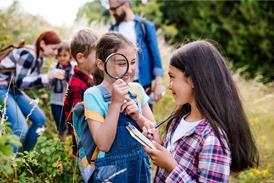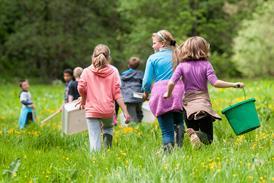Feeding goats, training dogs, and preparing animal food: does this sound like the sort of interactive learning outside the classroom experience your pupils would love?
.jpg)
Community project manager Anna Cowling fills us in on why animal welfare education is an important life lesson, one that can be learnt at Wood Green Animal Shelter in Cambridgeshire – for free.
How long has there been an education department at Wood Green and what do you do?
“Wood Green’s education department was launched in 2009 and aims to teach responsible pet ownership to the next generation.
“The Cambridgeshire centre is one of the largest rehoming centres in Europe, set over 52 acres. The centre rehomes a variety of companion animals from dogs and cats to guinea pigs, rabbits, rats, mice, ferrets and even chickens and teaches a very high standard of animal welfare across all species.”
What age range are the trips aimed at?
“Our free behind-the-scenes school visits are aimed at all ages from Reception to Key Stage four.”
What resources do you offer to students?
“We offer all school groups use of our learning centre with designated classrooms, vet role play area for younger visitors, toilets, lunch space and a picnic/play field.
Each class is assigned an education officer with a maximum number of 15 students per officer, and all tours can be curriculum linked to a variety of subjects including Literacy, Numeracy and PSHE.”
What does a school trip to Wood Green involve?
“The majority of visits are offered over a full day with flexible start and finish times. After a health and safety chat most classes will divide into groups and are led by their Wood Green education officer who will take them behind the scenes to find out more about the work that we do at the centre.
“Each school group has the opportunity to get hands-on with various tasks that can include preparing feeds, making enrichment items for the small animals, feeding the goats and chickens and even having a go at dog training.
“An example workshop titled Teaching Responsible Pet Ownership would include vet role play, and meeting, feeding and learning about a variety of animals like dogs and cats. Teachers can cater workshops to curriculum links of their choice.”
What are the main highlights of an educational visit?
“For many students it is the hands-on element of our tours that is the highlight and the opportunity to learn about animals outside the classroom. For students that are working within Learning Support or those who have behavioural special needs, our hands-on style of teaching is very engaging and captures the attention of every one of our visitors.”
.jpg)
What sort of resources do you offer teachers?
“Each teacher is sent a guide to their visit at the time of booking that answers common questions and also signposts them to various resources we host on our website. In terms of tying a visit to Wood Green into a classroom afterwards, every educator is given a follow up pack that reinforces information learnt during their tour that can be related to back at school.”
What ambitions do you have for the future of educational visits?
“We are constantly adding to the variety of free tours that we offer schools, our most recent addition being a tour specifically tailored to ICT GCSE students undertaking coursework related to animal shelters.
“We are always looking for new ways to develop our tour menu and are also hoping to start offering free tours at our Hertfordshire centre to Secondary school students during 2016.”
For further information, you can call 0844-248 8181 or visit www.woodgreen.org.uk.










